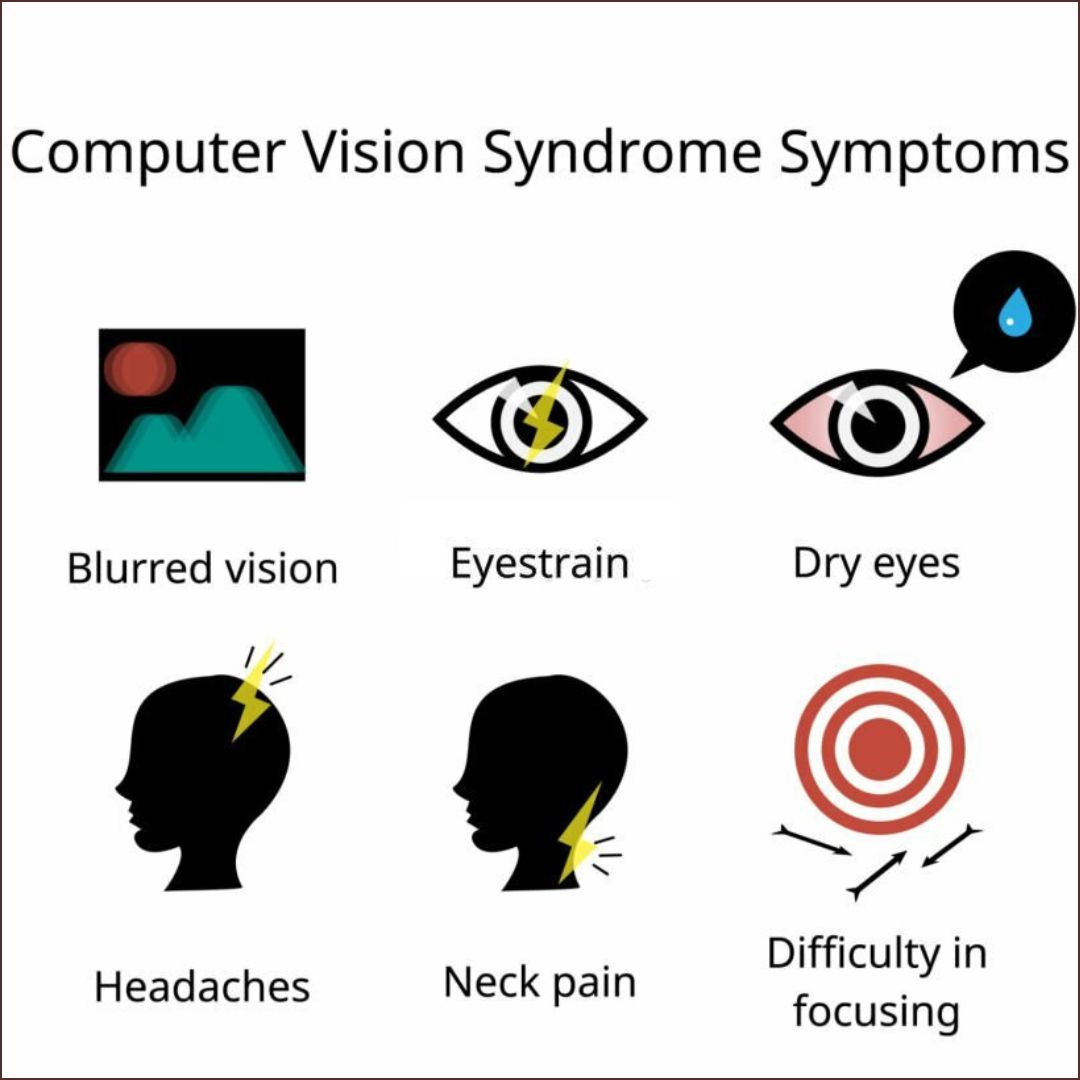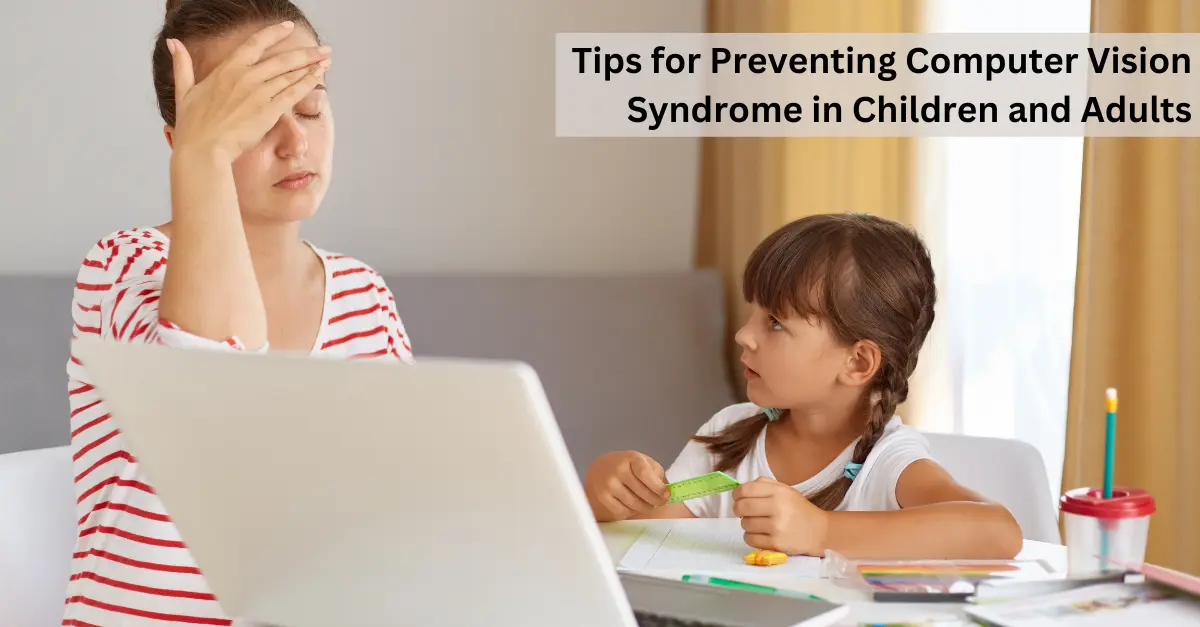In today's digital age, computers, smartphones, and other electronic devices have become an integral part of our lives. While these devices offer numerous benefits and conveniences, prolonged use can lead to a range of health issues, one of which is Computer Vision Syndrome (CVS). CVS is a common problem affecting both children and adults, and its prevalence is on the rise due to our increasing reliance on screens. This article aims to provide comprehensive information on Computer Vision Syndrome, including its causes, symptoms, risk factors, benefits, and most importantly, tips for preventing and managing it.
What is Computer Vision Syndrome?
Computer Vision Syndrome, also known as Digital Eye Strain, is a condition that results from prolonged and uninterrupted use of digital devices such as computers, smartphones, tablets, and e-readers. It is characterized by a range of eye and vision-related problems that occur when individuals spend extended periods of time staring at screens.
Causes of Computer Vision Syndrome
Prolonged Screen Time: The primary cause of CVS is the extended duration of time spent in front of screens. The eyes are not naturally designed for prolonged focus on digital screens.
Screen Glare and Reflections: Poor lighting conditions and screen glare can force the eyes to work harder to maintain focus.
Poor Ergonomics: Inadequate seating or screen positioning can lead to poor posture, causing CVS-related symptoms.
Uncorrected Vision Problems: Individuals with uncorrected vision problems, such as near-sightedness or astigmatism, are more susceptible to CVS.
Blue Light Exposure: Screens emit blue light, which can disrupt sleep patterns and contribute to CVS symptoms.
Symptoms of Computer Vision Syndrome
The symptoms of CVS can vary from person to person but commonly include:
Eye Strain: Aching, burning, or heavy feeling in the eyes.
Headaches: Frequent headaches, often starting at the forehead and temples.
Blurred Vision: Difficulty focusing on the screen or other objects, both near and far.
Dry Eyes: Reduced blinking while using screens can lead to dry, irritated eyes.
Double Vision: Seeing two images of the same object on the screen.
Neck and Shoulder Pain: Poor posture while using digital devices can cause neck and shoulder discomfort.
Difficulty Concentrating: Reduced concentration and increased irritability.

If you continue to experience severe or persistent symptoms of computer vision syndrome, it's advisable to consult with an Eye specialist.
Risk Factors for Computer Vision Syndrome
Several factors can increase the risk of developing CVS:
Excessive Screen Time: Spending long hours on screens, whether for work, study, or leisure, increases the likelihood of CVS.
Inadequate Lighting: Poor lighting conditions in the workspace or home can strain the eyes and worsen CVS symptoms.
Poor Ergonomics: Uncomfortable seating, improper screen positioning, and incorrect keyboard/mouse placement contribute to CVS.
Preexisting Vision Conditions: Individuals with existing vision problems are more vulnerable to CVS.
Blue Light Exposure: Extensive exposure to the blue light emitted by screens, especially before bedtime, can disrupt sleep patterns.
Age: As individuals age, their eyes become more susceptible to CVS, making older adults more prone to its symptoms.
Benefits of Preventing Computer Vision Syndrome
Preventing and managing CVS offers several benefits, including:
Reduced Discomfort: Minimizing CVS symptoms can significantly reduce discomfort, such as eye strain and headaches.
Improved Productivity: By preventing CVS, individuals can work or study more comfortably and efficiently.
Better Eye Health: Reducing digital eye strain contributes to long-term eye health.
Enhanced Quality of Life: A reduction in CVS-related symptoms leads to an improved overall quality of life.
Long-Term Vision Preservation: Preventing CVS helps maintain healthy vision throughout life.
Tips for Preventing Computer Vision Syndrome
Preventing CVS is essential for maintaining eye health and overall well-being, especially in our screen-centric world. Here are some practical tips for preventing and managing Computer Vision Syndrome:
1. Follow the 20-20-20 Rule: To reduce eye strain, follow the 20-20-20 rule: Every 20 minutes, take a 20-second break, and focus on an object at least 20 feet away. This practice helps relax the eye muscles and prevents fatigue.
2. Adjust Screen Settings: Optimize your screen settings for maximum comfort. Adjust the brightness, contrast, and font size to reduce glare and make on-screen text more readable.
3. Proper Lighting: Ensure that your workspace is well-lit. Use indirect lighting to reduce screen glare and reflections. Avoid working in dimly lit or excessively bright rooms.
4. Maintain Ergonomic Posture: Maintain proper posture while using digital devices. Your screen should be at eye level, and your chair and desk should support a comfortable working position. Use a document holder to avoid constantly shifting your gaze between the screen and paper documents.
5. Blink More Often: Blink frequently to keep your eyes moist. Extended screen time reduces the natural blink rate, leading to dry eyes. Consider using artificial tears to lubricate your eyes if needed.
6. Adjust Screen Distance: Position your screen at arm's length away and at eye level. This reduces the strain on your eye muscles and prevents you from leaning forward or tilting your head excessively.
7. Use Blue Light Filters: Many devices and applications offer blue light filters or night mode settings. Enable these features to reduce blue light exposure, especially in the evening to improve sleep quality.
8. Get Regular Eye Exams: Regular eye exams are crucial for detecting and addressing vision problems. An optometrist can prescribe glasses or contact lenses if needed and provide advice on managing CVS.
9. Practice the Palming Exercise: To relax your eye muscles, try the palming exercise. Rub your hands together to generate heat and place your warm palms over your closed eyes. Hold for 30 seconds while taking deep breaths. Repeat as needed throughout the day.
10. Adjust Device Settings: Adjust the text size, contrast, and color scheme on your devices to make them more eye-friendly. Use dark mode or invert colors to reduce strain, especially during nighttime use.
11. Limit Screen Time: Set limits on screen time, especially for children. Encourage breaks and engage in activities that don't involve screens, such as outdoor play, reading physical books, or engaging in hobbies.
12. Stay Hydrated: Drink enough water throughout the day to maintain overall health, including eye health. Proper hydration helps prevent dry eyes.
13. Screen-Free Bedtime: Avoid using screens at least an hour before bedtime to improve sleep quality. The blue light emitted by screens can disrupt circadian rhythms and make it difficult to fall asleep.
14. Consider Computer Glasses: Computer glasses with blue light-blocking coatings can reduce blue light exposure and alleviate CVS symptoms. Consult an eye care professional for recommendations.
15. Use Anti-Glare Filters: Consider applying anti-glare filters to your screens to reduce reflections and glare. These filters are especially useful for laptops and desktop monitors.
16. Practice the 10-10-10 Exercise: Similar to the 20-20-20 rule, the 10-10-10 exercise involves looking at an object 10 feet away for 10 seconds after every 10 minutes of screen time. This variation provides additional relief to your eyes.
17. Encourage Outdoor Time: Encourage children and adults alike to spend time outdoors regularly. Outdoor activities can help reduce the risk of developing CVS and promote overall eye health.
18. Monitor Children's Device Usage: Parents should monitor and limit their children's screen time, ensuring they take breaks and engage in other activities to prevent CVS and promote healthy development.
19. Create an Ergonomic Workspace: Invest in ergonomic furniture and accessories for your workspace, such as an adjustable chair and an ergonomic keyboard and mouse. These can significantly reduce the risk of developing CVS.
20. Seek Professional Help: If you experience persistent CVS symptoms despite following these tips, consult an eye care specialist. They can assess your condition and provide tailored recommendations or treatments.
If you continue to experience severe or persistent symptoms of computer vision syndrome, it's advisable to consult with an Eye specialist.
Computer Vision Syndrome is a prevalent condition that affects both children and adults in today's digital age. However, by following the tips outlined in this article, individuals can significantly reduce the risk of developing CVS and alleviate its symptoms. It's crucial to prioritize eye health and take proactive steps to prevent digital eye strain, as healthy eyes contribute to overall well-being and quality of life. By implementing these strategies and making mindful choices about screen use, we can enjoy the benefits of technology without compromising our vision.
Related Blog Articles:
1. Screen Time and Children's Mental Health: Finding a Balance
2. 20-20-20 Rule: A Simple Solution for Alleviating Eye Strain
.webp)














